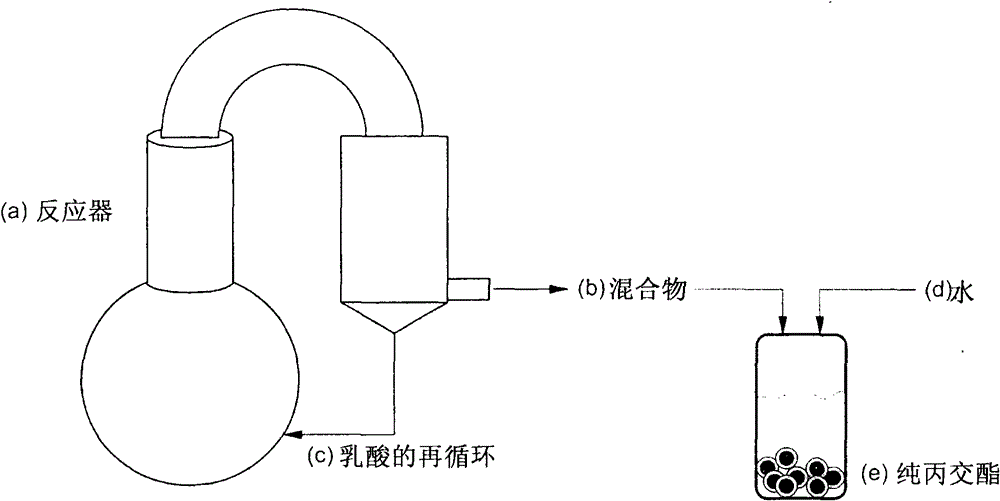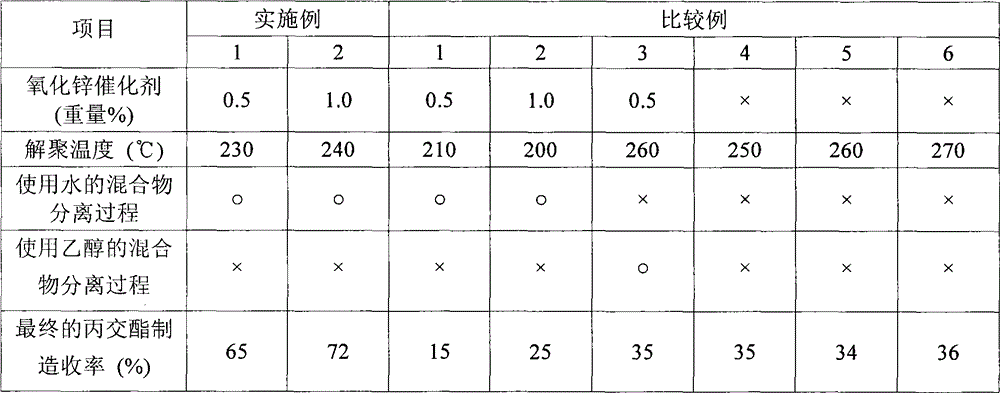Method for producing lactide from lactic acid
一种丙交酯、乳酸的技术,应用在有机化学等方向,能够解决不清楚成本效益等问题
- Summary
- Abstract
- Description
- Claims
- Application Information
AI Technical Summary
Problems solved by technology
Method used
Image
Examples
Embodiment 1,2
[0040] The chamber-scale reactor used in the examples was figure 1 In the example description. The reactor is about 5 cm wide and about 5 cm high. A transfer line is attached to the top of the reactor.
[0041] The bottom part of the reactor is filled with liquid D-type lactic acid, and a zinc oxide catalyst is injected into the liquid lactic acid. The reactor was equipped with a three-way valve at the bottom to supply liquid lactic acid to the reactor. Nitrogen carrier gas was also supplied to the reactor through a line connected to a tee. The entire assembly was placed in a heating mantle and heated to maintain the desired reactor temperature. Lactide and other by-products produced by the catalyst reaction in the reactor are evaporated.
[0042] The catalyst added to the liquid lactic acid was zinc oxide (ZnO), which was added in amounts of 0.5% by weight (Example 1) and 1.0% by weight (Example 2), based on the liquid lactic acid. Subsequently, the unreacted lactic aci...
Embodiment 3
[0050] 3000 g of D-type lactide produced in Example 1 was introduced into a reactor equipped with a stirrer, and heated to 300° C. under a nitrogen atmosphere. 0.9 g of stannous octoate and 1.8 g of 1-hexanol were introduced thereinto. Subsequently, the reaction was performed at a temperature of 180° C. for 2 hours, and the polymer was recovered from the reactor. The crushing process was carried out to obtain D-type polylactic acid with a weight average molecular weight of about 150,000 g / mol.
[0051] Invention effect
[0052] The method of the present invention has the advantage that compared with the conventional production method, D-lactide can be obtained through a simple method with high yield. Therefore, the production cost of finally obtaining D-type polylactic acid from D-type lactide can be reduced.
[0053] The method of the present invention also has the advantage that the asymmetric carbon atoms in the product lactide are mainly in the same absolute configura...
PUM
 Login to View More
Login to View More Abstract
Description
Claims
Application Information
 Login to View More
Login to View More - R&D
- Intellectual Property
- Life Sciences
- Materials
- Tech Scout
- Unparalleled Data Quality
- Higher Quality Content
- 60% Fewer Hallucinations
Browse by: Latest US Patents, China's latest patents, Technical Efficacy Thesaurus, Application Domain, Technology Topic, Popular Technical Reports.
© 2025 PatSnap. All rights reserved.Legal|Privacy policy|Modern Slavery Act Transparency Statement|Sitemap|About US| Contact US: help@patsnap.com


